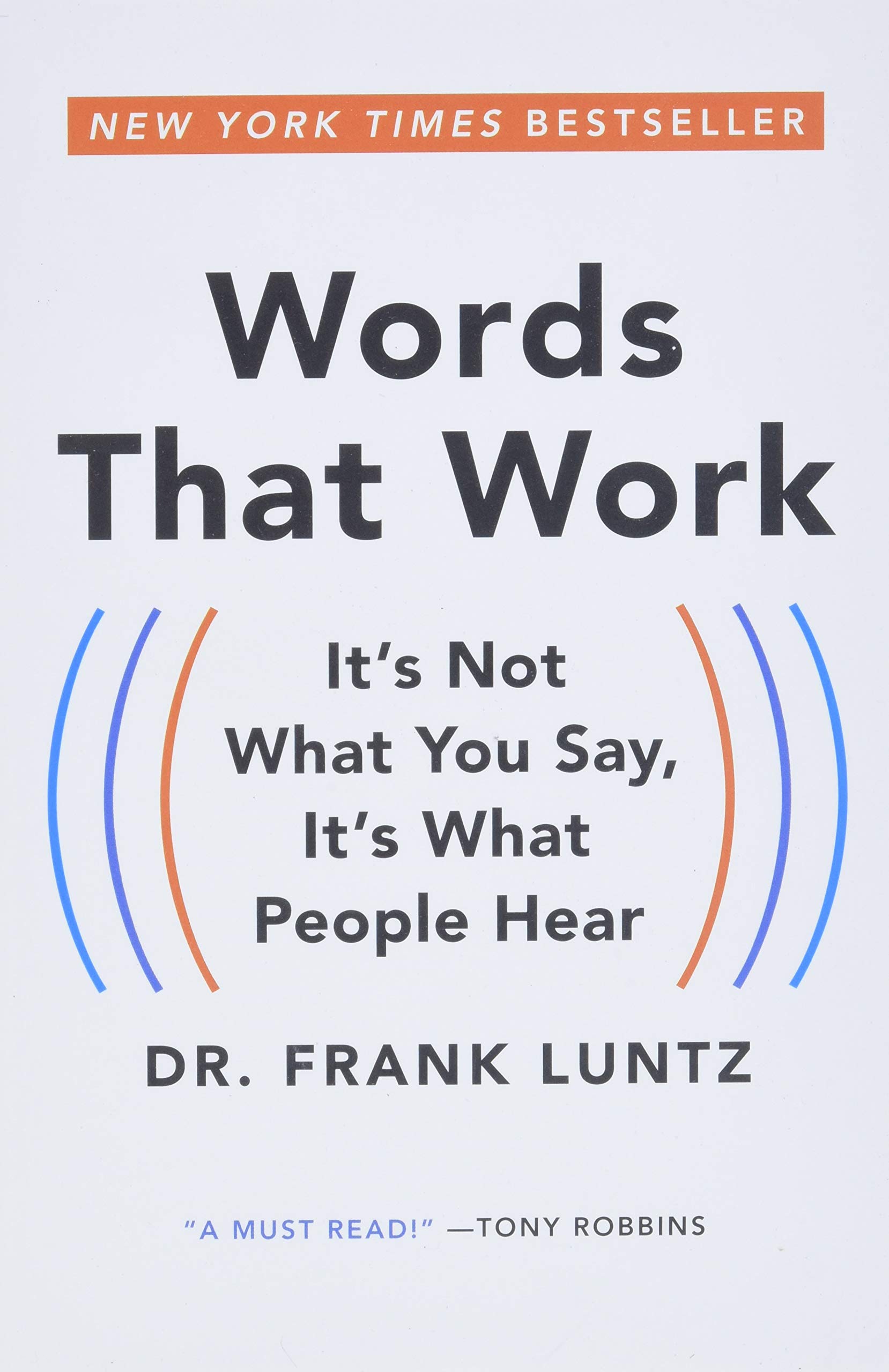Book Review: Words that Work
Published:
Drawing on decades of experience in politics and business, Frank Luntz seeks to document the Words that Work. The book is a catalog of strategies and principles for effective communication, particularly for organizations.

Here’s the paperback and audiobook.
Utility: ⭐⭐⭐ (3/5)
Some of the principles are pretty obvious, and many are obviously borrowed from other thinkers. The advice on wording is immediately helpful, though. Drawing on his own studies, Frank recommends that proponents say “peace of mind” instead of “security” and “energy exploration” instead of “oil drilling.” Is it corporate doublespeak?—yes! Know your enemy. However,
As a smaller complaint, most of his sections on digital communication are hilariously out of date. I often felt a strong urge to “ok boomer” Frank.
Writing: ⭐⭐⭐ (3/5)
Frank deserves praise for illustrative case studies that demonstrate his ideas and provide historical context. They’re often funny as well.
However, for someone who stresses short words and short sentences, Luntz isn’t exactly the clearest writer. Some paragraphs overstay their welcome, and many sections are way too long or repetitive. In some cases, he leaves a nearly identical sentence in two separate sections. I found myself skimming through the end.
Notes
Audience First
It’s not what you say, it’s what people hear. The same idea is recieved in different ways depending on how you express it. Carefully choosing your words can help you pursuade audiences. For Frank, this meant both focus groups (sit-down discussions between similar people) and dial sessions (live classroom-style feedback on media). There are many words and phrases that Frank endorses. Read the book for the details!
Ten Rules
- Simplicty: Use small words
- Brevity: Use short sentences
- Credibility is as important as philosophy
- Consistency matters
- Novelty: Offer something news
- Sound and texture matters
- Speak aspirationally, people forget what you say but not how you made them feel
- Visualize, the word “imagine” is an incredibly powerful tool
- Ask a question, help them reach the point on their own
- Provide context and explain relevance
